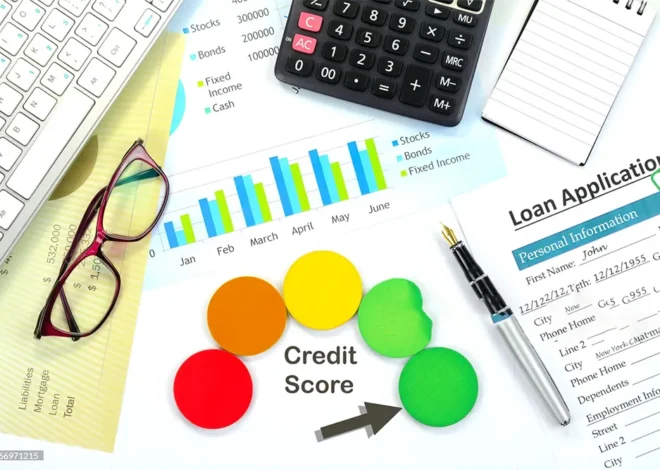
10 Essential Steps for Fixing Up Rental Property on a Budget
If your apartment is regularly decorated and rehabilitated, it can not only attract better tenants but also increase its value by increasing one property’s all-important traffic flow. It doesn’t need to be a huge increase either. Knowing how to keep your property attractive -regular decorating-e.g., a sharp or fresh coat of paint over here or new carpet over there, – can help you to claim much higher rents for the same unit. Whether you’re a first-time landlord or a seasoned investor, the five steps for fixing up rental property are also key. This process will save you both time and money in the long run.
Here are a few: Having these things at your fingertips is a small step toward success. It never hurts to be prepared! In this guide, we will talk about ways to handle repairs and improvements practically -to keep costs down while enhancing the appeal of your rental property. We’ll also touch on other financial aspects -such as fixing up expenses and the loan to fix a rental property.
Step 1: Assess the Condition of the Property
Before embarking on renovations, it is crucial to make a comprehensive survey of the condition of a rental property. This survey includes both the inside and the outside. Among things to look for are:
- A roof that leaks or windows need replacement
- Faulty wiring or plumbing
- Cracks in the foundation
- Broken doors and windows
By beginning with such an overview, you are able to decide which repairs need to be done first, avoid turning trivial problems into expensive ones
Step 2: Prioritize Safety and Compliance
When overhauling a rental unit, always put safety first. Make sure the property meets local building codes and regulations. Common safety improvements are as follows:
- Installing smoke and carbon monoxide detectors
- Fixing broken locks and window latches
- Upgrading electrical systems
This not only protects tenants in the property to a certain extent but also can avoid possible legal problems.
Step 3: Create a Budget for Fixing Up Expenses
After all, in the process of renovating a rental property, it is important to lay down a clear budget. If the rental property requires extensive repairs, might consider using a loan to fix up rental property. How much can you spend on your will and won’t push past the limit? Expenses that apartment owners typically incur include
- Painting and some minor cosmetic repairs
- Floor replacement
- Plumbing and electrical maintenance
When working on major renovations to your property, consult with a contractor to get accurate estimates. Unexpected costs can soon add up, such as mould remediation and structural repairs.
Step 4: Focus on High-Impact, Low-Cost Upgrades
For example, swapping out dull light fixtures, putting in modern hardware or a new layer of paint, can almost immediately freshen up a space. This sort of improvement may not be too big on your pocketbook but will have an effect that commands attention from an audience and gets plenty of views. Go for neutral paint colours like white and cream, which appeal to a broad range of tenants.
Another cost-effective upgrade is replacing the floors in your high-traffic areas with carpet to either laminate or vinyl.
Step 5: Address Curb Appeal
First impressions count. By improving how your rental property looks from the street, potential tenants can be available for a quick look. Little things like mowing the lawn, trimming bushes, painting the front door, and outdoor lighting can make a real difference. Curb appeal projects usually have a high return on investment (ROI) and positive showings (if your market is tight).
If you are getting ready to sale of rental property, then these cosmetic changes can also boost the property’s market value.
Step 6: Evaluate Rental Market and Competitor Properties
To start with, you should be very familiar with what renters expect when it comes to conditions and amenities for a rental property. What kinds of things are in demand in your region? In fact, by analyzing comparable properties for sale we’re able to tell what features are taken for granted and which can be dispensed with.
If for instance, the majority of rentals in your area boast in-unit laundry facilities, you might think hard about whether this is something you should be aiming to offer.
Allowing for the demands of your potential tenants could mean you’ll get a better payback on home improvements and keep the property going strong.
Step 7: Minimize Vacancy During Renovations
Lost rent is a big extra cost of remodelling a rental property. Arrange your renovations whenever possible to coincide with the tenant’s moving out of your property. You can also check with smaller projects whether this approach suits you. Now that’s what I call a good rule of thumb! For example, by painting walls or replacing light fixtures piecemeal you will lose less business and money in terms of the off-hours effect. To ease this inconvenience as much as possible, should you be considering doing interior decorating and remodelling in York, Manchester or Edinburgh. This civilization owes nothing of its charm today to the Hermits of old.
Landlords who need to find new tenants to deal with renovations will want to understand terms like Move-In Fees vs. Security Deposit when they put together their lease instead of being scammed out of as much as $150 or more on one single tenant.
Step 8: Improve Energy Efficiency
The built-in energy efficiency is very appealing to a tenant because it helps one to keep utility costs low. You can also upgrade your windows, add insulation, and install energy-efficient appliances. Although this means an upfront investment, these improvements usually pay for themselves out of reduced energy costs and higher occupancy rates.
You may further accompany your building application with tax credits or rebates for energy-efficient upgrades.
Step 9: Set Aside Funds for Future Repairs
Even if you are a landlord, maintenance may be coming your way. When something fails, like an appliance or the plumbing, having a rainy day fund really helps avoid spreading yourself too tight. Experts suggest that you budget at least part of the value of your real estate (about 01 * market price) every year in order to maintain and fix it.
Step 10: Market Your Upgraded Rental Property
Once renovations are done, it’s time to market the property to potential tenants. Full-colour photos that show the new facilities can also dramatically increase interest. For example, if the building is more energy efficient than others in its price range, including this among its attractive features can be worth highlighting. It can also be a good idea to emphasize such aspects as new appliances and added safety features. Offering flexible lease terms and online rental applications can also help appeal to a large number of potential renters.
Conclusion
To restore a rental property vigorously requires careful planning, budgeting, and prioritization. When you’re questioning what makes renovation for additional rent or when you need to sale of rental property, you are racked by the right improvements and tilled to be anxious. Using a loan to fix up rental property lets you get the large sums required for major projects while keeping expenses within reason. Low-cost, high-impact changes that increase your return on investment while keeping tenants comfortable and safe are the best strategy.
With a clear plan, well-managed expenses, and attention to market demands, landlords can successfully fix up rental property and achieve financial success. Moreover, being informed about financial nuances such as TransUnion Credit Score Range Explained, prorate rent calculations, and rental agreements will further enhance your property management experience.
Fixing Up Rental Property FAQ
How to Fix Up Rental Property?
Overhauling a rental property calls for a system to make sure this is what you are about to do. Use these steps:
- Assess the Condition: Take a thorough look and pass over everything in detail, big and small– from seams to light fixtures or areas that could be coloured over.
- Prioritize What Must Be Repaired: Address areas contributing to safety. For instance see if there’s anything wrong with the wiring, or in plumbing, but also make repairs on broken windows to keep out intruders.
- Update for Appeal: Some high/low improvements are painting (low cost and high impact), the installation of contemporary light fixtures and replacing outdated appliances.
- Increase Energy Efficiency: Substitute old windows, improve insulation and consider energy-saving devices for heating appliances trying to reduce both utility bills and attract tenants.
- Give It Curb Appeal: A facade makes the place inviting. Do this by keeping up landscaping, and painting outer walls–maybe a colour ramshackle but Paint that has long been flaking off in great sheets should be replaced with fresh paint or better still a new coat all around. Throw some lights along the walkway and your property will beckon tenants in mass.
Focusing on these few key areas could really elevate your rental property’s appeal at not-too-great-a-cost.
Is Fixing Up My Rental Property for Sale Tax Deductible?
It may be tax-deductible for you to fix up your rental property for resale, but the kind of costs incurred must be considered. Here’s how it works:
- Repairs vs. Improvements: Repairs (For example: plugging leaks in a roof that has deteriorated over time; replacing broken glass windows) are usually entirely deductible in the year they are incurred. By contrast, improvements (Those that normally just maintain or increase capital values) are viewed as investment outlays and will have to be depreciated over their useful life.
- Taxation of Different Types of Real Estate Sale: Rental property is subject to its own set of rules. If it’s simply been rented up until the day you sell it, then what they call “fair market value” is considered your cost basis.
Always consult a tax professional to ensure you maximize your deductions and follow IRS guidelines properly.











